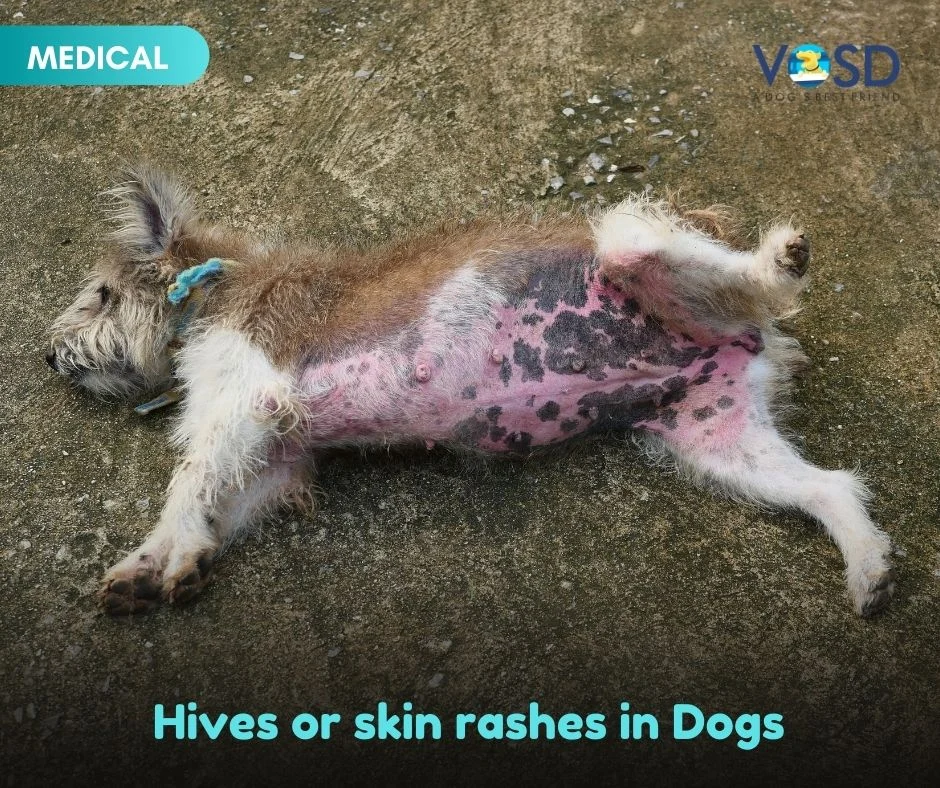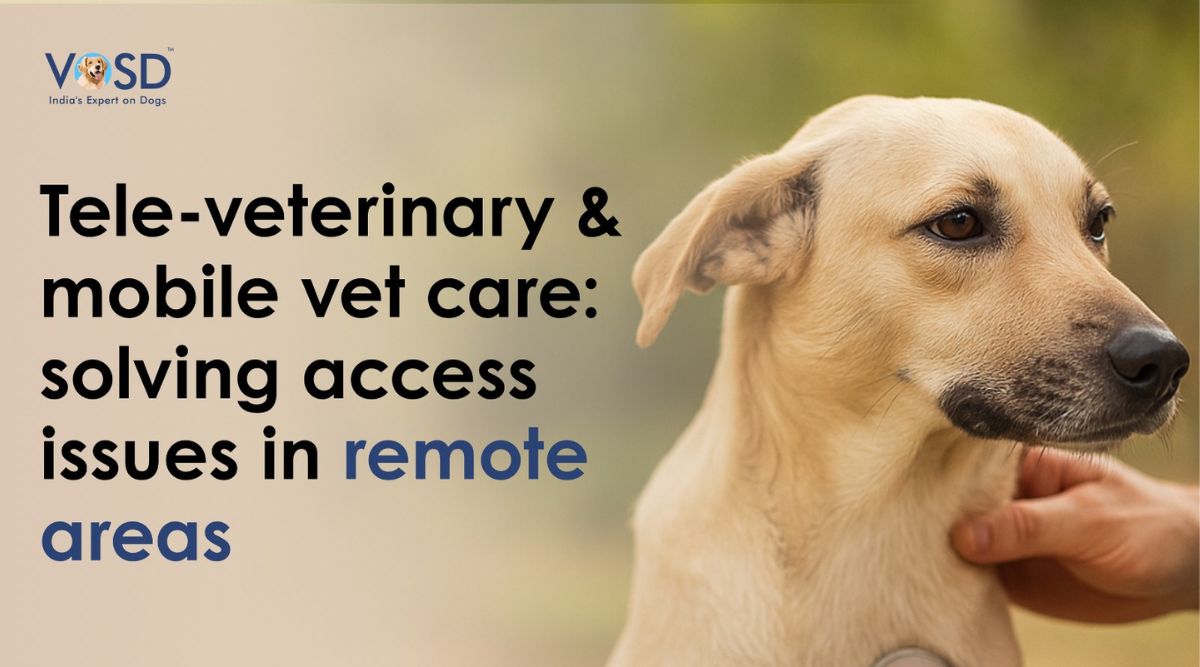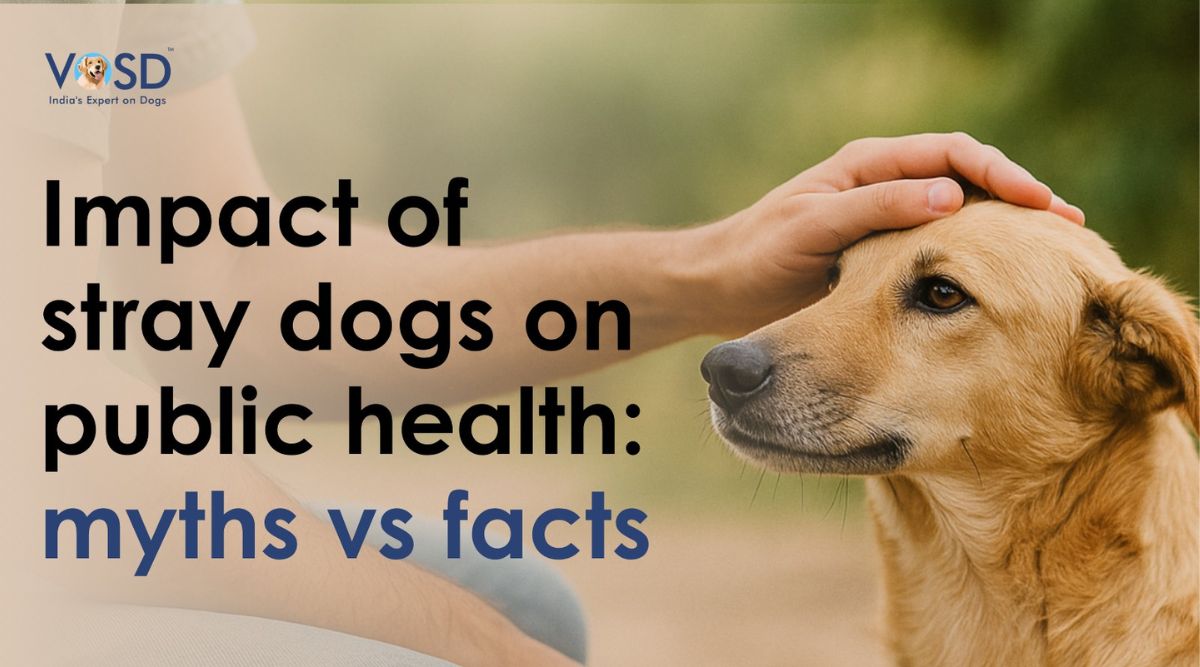Read more on how to identify and treat hives in dogs.
What are hives?
Hives are nothing but rashes on the skin and are also known as urticaria. Hives are usually restricted to certain areas of the body and become visible as patches of red or swollen skin. Dogs find them extremely itchy and they seem to appear quite suddenly. The skin erupts and the wheals appear almost immediately after the dog has been exposed to conditions that cause these hives to develop. These hives may disappear just as quickly; however, if the reason for their appearance is not noticed and removed from your dog’s vicinity, the hives are likely to reappear.
Hives may be accompanied by a swollen face (angioedema) in some cases. It is the result of a reaction from the immune system from exposure to some allergen. Hives by themselves are not considered life threatening.
Causes of hives or urticaria in dogs
Allergens in the environment are the usual culprits that cause hives to appear. Some of them include:
Insect bites – these include bee stings and spider bites and if your dog has been in an environment that exposes them to such insects, this is a likely cause for hives to appear.
Vaccinations – In some cases, if your dog has received vaccinations to counter rabies or kennel cough, it is known to cause hives.
Food allergies – Any new food that is introduced to your dog would have to be carefully monitored and tried in small doses to verify its compatibility with your dog. If your dog is allergic to certain foods, hives are bound to appear almost immediately.
Chemical reactions: If your dog is exposed to areas that have been sprayed with a form of pesticide, your dog may be allergic to the chemical components leading to form hives.
Plants: Some plants such as poison ivy may be a key factor in hives found on your dog.
Bath products: There are some shampoos that particularly trigger a reaction if your dog is not used to it and you are likely to notice rashes on the skin.
Genes: If your dog has shown signs of genetic abnormalities, you may see them result in hives or they will make the hives worse acting along with the root cause of hives.
Other causes: Heat, stress, and intense exercises can also cause hives to appear in your dog.
What are the symptoms of urticaria in dogs?
Patches of redness: The size of the patches may vary; but signs of red patches around the face, legs, and abdomen appear and are very noticeable.
Swelling: The area around the muzzle will appear swollen and again, is very noticeable. The area around the eyes will also appear swollen and the eyes will look as if closed.
Scratching: The patches of skin that have developed hives will be highly itchy and your dog will start scratching furiously or at least, try to reach unreachable areas in order to scratch.
Drooling: If your dog starts drooling not just because of the food or treat in the vicinity, you could look for a swelling around the muzzle.
Fever: In the cause of severe reaction, your dog may develop fever and may not have as strong an appetite as usual. This usually precedes eruptions.
Eruptions: If your dog develops a rash, you would see signs of eruptions in the form of raised lumps. If these eruptions are left untreated, they can cause a more severe reaction including in your dog’s throat causing it to close. There have been cases where the eruptions have appeared on the nose, rectum, vagina, and the mucous membranes in the mouth.
Diagnosis
Hives or urticaria are not very common in dogs. But, it happens! It does need a visit to your dog’s vet for a diagnosis.
Your dog’s vet will certainly need to know the medical history as well as any recent changes in diet or environment. In some rare cases, a dog may have a chronic condition that causes urticaria, which will be laid bare through the medical history. This is apart from the general physical examination. Only a physical exam would highlight any lesions or eruptions that appear on your dog. The wheals that are caused by skin eruptions are hairy and crusting. A skin biopsy may be required only if the case is atypical.
Is prevention of urticaria possible?
Can you prevent urticaria? It depends on whether it is possible to keep your dog away from agents that are likely to cause hives. But, you won’t know which ones to avoid unless your dog has first reacted to it! You can definitely try to prevent a recurrence of urticaria. This is also true in the case of vaccinations. If your dog has had a reaction to a vaccination in the past, you would be better off by pre-treating your dog before getting new vaccinations. Preventing hives in the first instance is next to impossible!
Treatment
Antihistamines ought to do the trick. Your dog’s vet is sure to start with a dose of antihistamines and look for a reaction to this before going on to recommend a steroid. Hives are likely to go away on their own within a couple of days. Using a cold towel or ice cubes to soothe the itching can go a long way to make your dog feel better.
If your dog has hives and it is the first time, a visit to the vet is a must. Understanding the cause for the hives will help you prevent a recurrence. It will also show you what to expect if it recurs.
As a pet parent, you will need to follow the vet’s instructions and you may also want to keep Benadryl handy for administering immediately.
Disclaimer:
The information contained in VOSD Vet Advice™ is not intended nor implied to be a substitute for professional medical action which is provided by your vet. You assume full responsibility for how you choose to use this information. For any emergency situation related to a dog’s health, please visit the nearest veterinary clinic.








